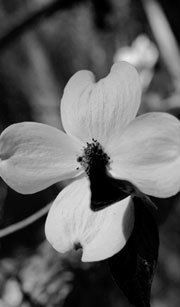 |
||
 |
||

 |
• HOME • GENERAL STORE • NATURAL HERITAGE • HISTORY, CULTURE & CRAFTSMANSHIP |
||||
|
Natural Heritage
• Trees & Shrubs of the Ozarks |
|||||
| Mulberry Index • Jefferson Tree Trees & Shrubs Index • Oak • Hickory • Walnut • Catalpa • Loblolly Pine • Red cedar • Elderberry • Sumac • Sassafras • Persimmon • Osage-orange • Mulberry • Witch Hazel • Sarvisberry • Dogwood • Redbud • Crape Myrtle • Mimosa Natural Heritage Index • Fishing • Hunting • Camping • Conservation • Bass Pro Blog • Hills & Hollows • Rivers & Lakes • Springs • Caves • Rocks & Fossils • Trees & Shrubs • Plants & Herbs • Hill Critters • Flyin' Critters • Water Critters • Snakes & Such • Forgotten Critters |
|||

Of the three species of mulberry in the Ozarks, only the red mulberry (Morus rubra) is native to North America.
It is believed that both black (Morus nigra) and white (Morus alba) mulberries originated east of the Mediterranean and were brought into Europe during the Crusades (Wernett, 301).
Consequently, all types of this tree (whichare closely related to the Osage-orange) have been growing in this land of ours for at least 300 years.
Considerable hybridization occurs between species so exact identification can be hard.
However, there are some basic traits for which to look.
The first is the most obvious: fruit color.
Morus rubra ripens to a quite red. The “berries” tend to be comparatively long aggregate fruit, with tightly packed individual drupes. The taste ranges toward the tart side.
The leaves of the red mulberry are often quite large. Its bark has a slightly orange tint, similar to its cousin, the Osage-orange.
Black mulberries’ fruit is rounder, less compact, and less tart. During drought years, black mulberries can be rather tasteless. The leaves of Morus nigra are much smaller than those of Morus rubra.
White mulberries’ fruit share similar size, shape and composition with Morus nigra. They are, however, the sweetest of the three species with an intoxicating flavor.
The leaves of the Morus alba tend to be quite small as well.
The mulberry is usually considered little more than a nuisance these days.
The fruit of the tree can be messy alone. It is even more so after traveling through the digestive tract of a robin.
And our society has little respect for plants or animals that force us to clean our windshields.
Nevertheless, it’s important to remember the significance of this tree family.
Mulberries, which usually begin ripening in late June, were so cherished by our ancestors that species were brought with them across the Atlantic in the 16th and 17th centuries.
Mulberries were an important staple to Native Americans and early European settlers.
Mulberries are part of our rich, collective heritage.
It’s best we not forget that.
Joshua Heston, editor
May 13, 2009


All photo credits: J. Heston. SOTO © Archive 08/22/06
Size: 20-30 feet tall; leaves 3 to 5-inch long.
What to look for: leaves oval, mitten-shaped, or 3-lobed, coarsely toothed, hairy below; fruits dark red to purple.
Habitat: bottomlands and gentle slopes in rich, moist soil.
— page 301, Wernett, Susan J., et al. North American Wildlife. The Reader's Digest Association, Inc., 1986.
_______
(THE MULBERRY BUSH SONG)
Here we go ’round the mulberry bush
The mulberry bush
The mulberry bush
Here we go ’round the mulberry bush
So early in the morning!
May 13, 2009
_____
FROM THE HERBAL COMPENDIUM...
Mulberry. Morus rubra. Red Mulberry.
Bark: Vermifuge. Cathartic.
The infusion of the pulveruized bark is useful as a cathartic and to dispel worms.
“A fine flowering shurb, in upland woods, U.S. and Brit. Amer. common. Fruit bright red, sweet. Fruit ripe in Aug. Flowers in June and July.”
— page 164, Shaker Medicinal Herbs: A Compendium of History, Lore and Uses by Amy Bess Miller
_____
A word of safety : folk remedies on StateoftheOzarks are published for informational purposes only.
These remedies are never intended to cure, treat or mitigate any disease or disease condition.
For questions about disease or disease conditions, consult a qualified healthcare professional.
_____